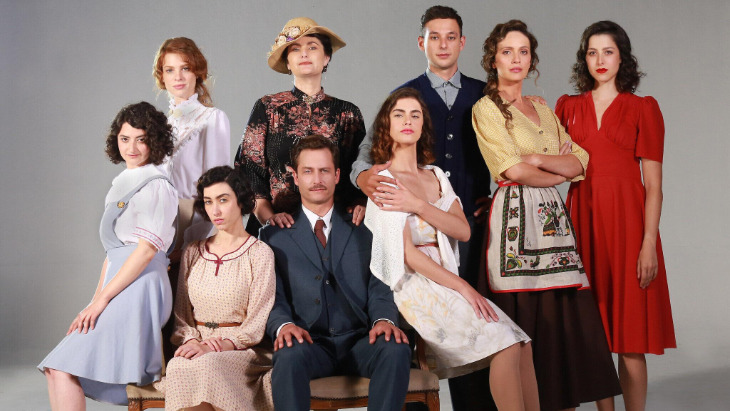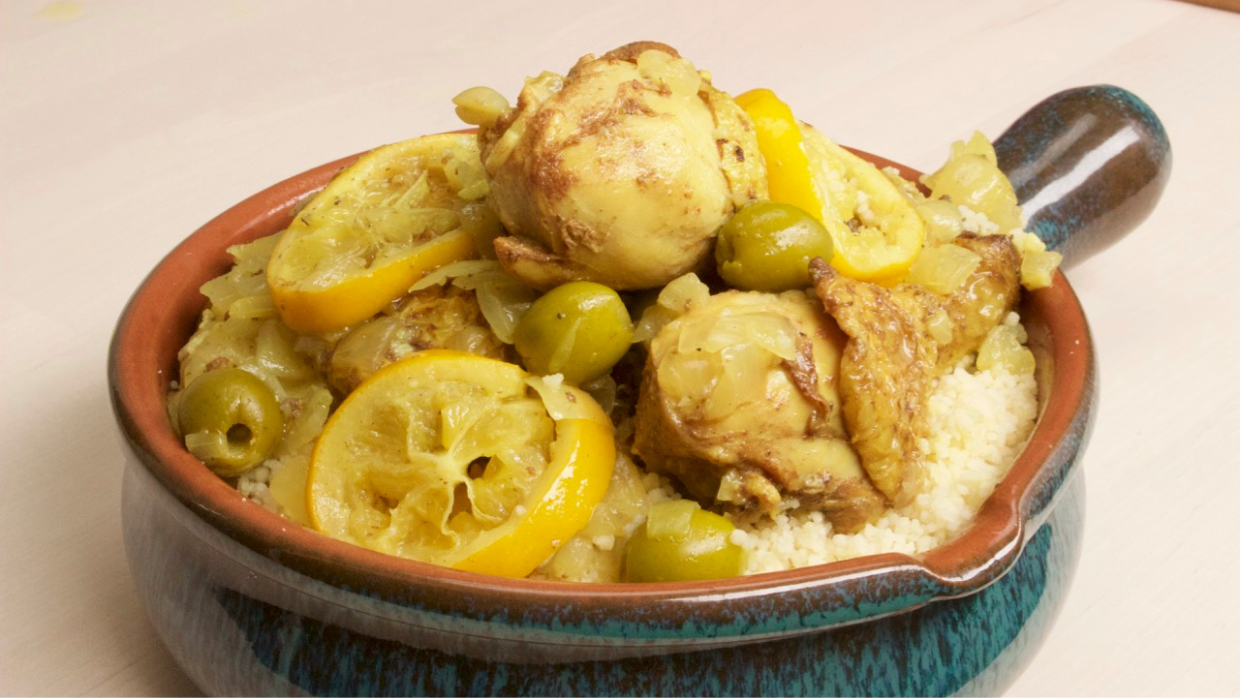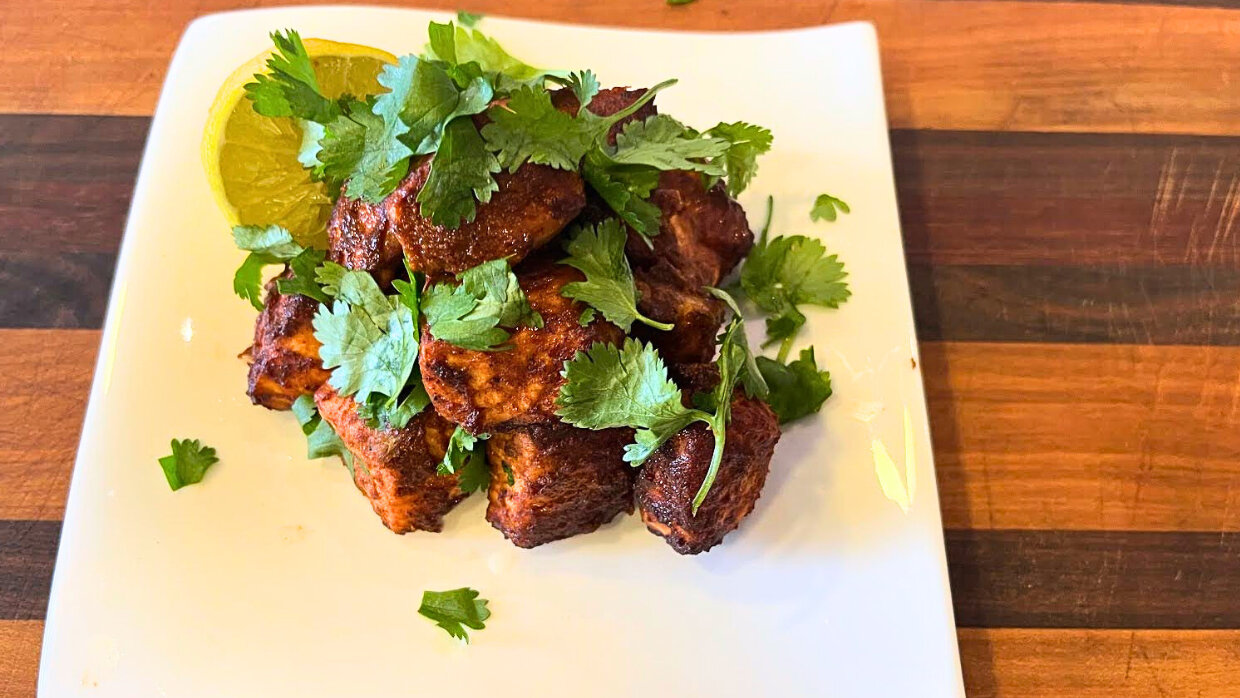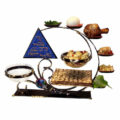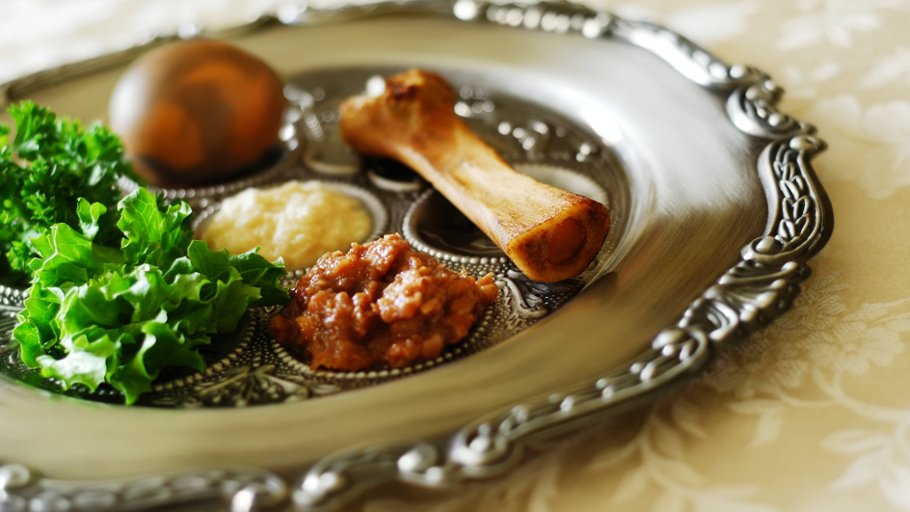“Of all our family I was closest to Nona Rosa. While Nono Gabriel was alive his and Nona’s house was the center of the family. We gathered there on Friday evenings for Shabbat, and on Saturday mornings for huevos haminados that we’d eat with cheese-filled borekitas and sweet sütlaç rice pudding, on which Nona would draw a Star of David with cinnamon.”
(The Beauty Queen of Jerusalem, Sarit Yishai-Levi, St. Martin's Publishing Group, 2016)
 Biscochos
Biscochos
Huevos haminados (overnight hard boiled eggs), borekitas (small cheese pastries), sütlaç (rice pudding), as well as macaroni hamin (overnight stew of noodles and chicken), sofrito (meat and potato dish), bizcochos (ring shaped cookies), kiftikas de prasa (leek fritters) are only a few of the Sephardi dishes that are woven into the saga of the Ermoza family in The Beauty Queen of Jerusalem book and now a TV show available on Netflix.
The book follows four generations of the Ermozas in Jerusalem from the early 1900s until the 1970s, from the days of the Ottoman Empire, through the British Mandate, the War of Independence and the early decades of the State of Israel. The family is part of the Sephardi community of Jerusalem, a community that dates back to the years following the Spanish inquisition and the expulsion of the Jews. In the 19th century, more Sephardi Jews migrated to Jerusalem from Turkey and the Balkans, as well as Ashkenazi, Moroccan, Yemeni and Kurdish Jews, and the growing population, cramped in their small quarters within the walls of the Old City, started expanding outside the walls. One of the first new neighborhoods was Ohel Moshe, a Sephardi neighborhood where we find the Ermoza family at the beginning of their story. It is located right next to Shuk Machne Yehuda, the market where the family owned a delicatessen shop.
What takes the reader deep into the worlds of Merkada, Roza, Luna and Gabriela are the constant appearances of homemade dishes they all make, in their original Ladino (Judea-Spanish) names, and their family traditions, conversations, arguments and life cycle events.
 Macaroni Hamin
Macaroni Hamin
One dish that follows the family throughout the generations is macaroni hamin. Hamin is a general name for Shabbat overnight stews, a name that first appeared in Medieval Jewish Spain and referred to a simple overnight dish of meat and wheat berries.
Macaroni hamin is a Sephardi version, popular especially in Jerusalem, of noodles (macaroni refers to thick spaghetti) cooked with chicken and very little spices. As is the case with many of the Shabbat overnight stews, the long hours of cooking over a very low heat, make this dish simply irresistible. The macaroni absorbs the fat and flavor of the chicken, and the chicken becomes so tender, you can chew on its bones. It is considered a summer hamin, as it is lighter (well, at least relatively speaking) than the regular hamin of beef, marrow bones, beans and grains. Some versions include sliced potatoes at the bottom of the pot, that turn crispy and help form a cake-like shape when the pot is flipped upside-down into a serving dish. Most versions also include hard boiled eggs, known as huevos haminados in Ladino, that become brown in color with a creamy yolk after a night in the oven. These are the same huevos haminados that Gabriela remembers fondly eating at her Nono and Nona’s house on Shabbat mornings. The hamin itself would be served for lunch, a few hours later.
Macaroni hamin has other names, all of which have to do with the type of noodles being used. It is sometimes called skulacha (from the word eskolacha, a type of noodle in Ladino) or hamin de skulacha (according to Gizar Kon Gozo by Matilda Koen Sarano and Jerusalem of Delights by Rina Valero.) I’ve found similar dishes in Syrian cookbook (Bless your Hands by Sigi Mantel,) Lebanese cookbook, where it is called treya from the word alatriya in Arabic for vermicelli noodles (Lebanese Cooking by Gracia Grego,) and in Claudia Roden’s The Book of Jewish Food. Roden talks about dishes from Egypt and Morocco, also called treya or intriya, although those were not cooked overnight.
“My mother Luna passed away shortly before my eighteenth birthday. A year earlier, while the whole family was sitting around the table for lunch as usual, and she was serving her famous sofrito with peas and white rice, she sat down on her chair and said, “Dio santo, I can’t feel my leg.”
(The Beauty Queen of Jerusalem, Sarit Yishai-Levi, St. Martin's Publishing Group, 2016)
(Apologies for the spoiler, for those who are watching the TV show, but this is the first paragraph of the book…)
 Sofrito
Sofrito
Sofrito is another unique Jerusalem Sephardi dish. It does not refer to the famous tomato, garlic and pepper sauce at the base of many Latin and Spanish dishes, but instead to a simple dish of meat and potatoes.
The beef chunks or chicken pieces are browned or pre-cooked, and the potatoes are then added to the same pot after they’ve been pre-fried (sofrito, means fry first.) The dish is cooked with almost no liquid, on very low heat, and the potatoes are steamed over the meat and absorb its rich aroma and flavor. It’s such a delicious dish, and is very popular in Israel even these days.
Borekitas are small pastries from the Turkish borek family, with a flaky pastry shell and different filling of either feta-like salty cheese or roasted eggplant and more. Israelis love all types of borek, and you can find a huge variety, spanning from the Bulgarian pastelikos and banitsa, to boyos and bulemas, and the Israeli style burekas made with puff pastry.
Visiting Jerusalem nowadays, you’ll find a few companies that offer food and history tours based on the Beauty Queen of Jerusalem. But it is possible to recreate some of this magic at home, if you just follow the recipes attached to this article, and roll the Ladino names of the dishes on your tongue, just like Merkada and Roza did.
Get my recipe for Hamin Macaroni and Sofritos to enjoy while you watch the next episode of the Beauty Queen of Jerusalem.





